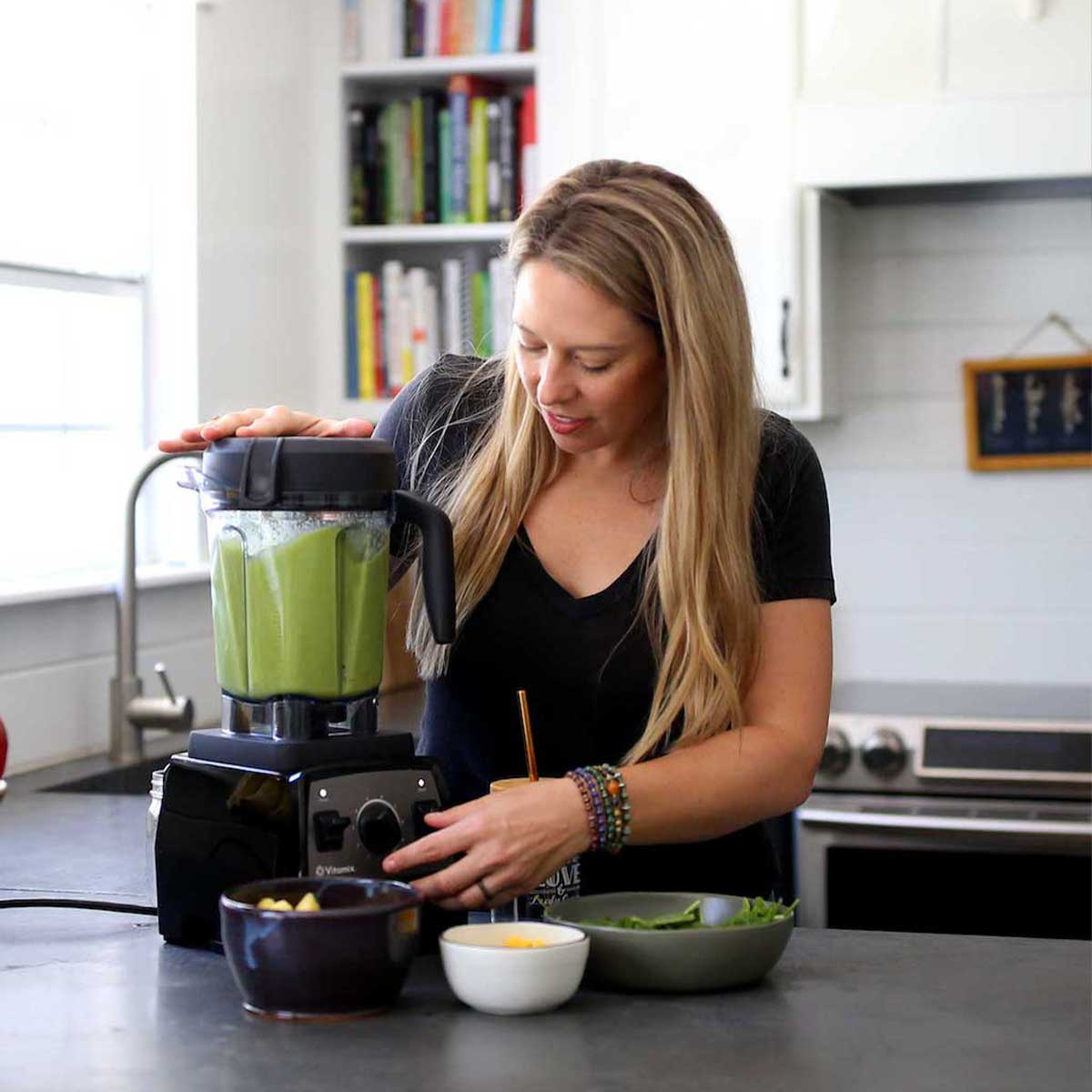
This post may contain affiliate links, meaning I can earn a small commission from items you purchase (at no cost to you).
If you’re anything like me then your blender is the most used appliance in the kitchen. It works to make those daily green smoothies as well as soups like my vegan tomato soup, sauce staples like cashew cream and more! Let’s give it a little love and learn how to clean a blender to keep your machine at peak performance. With my easy guide that smoothie maker will become a self-cleaning blender.
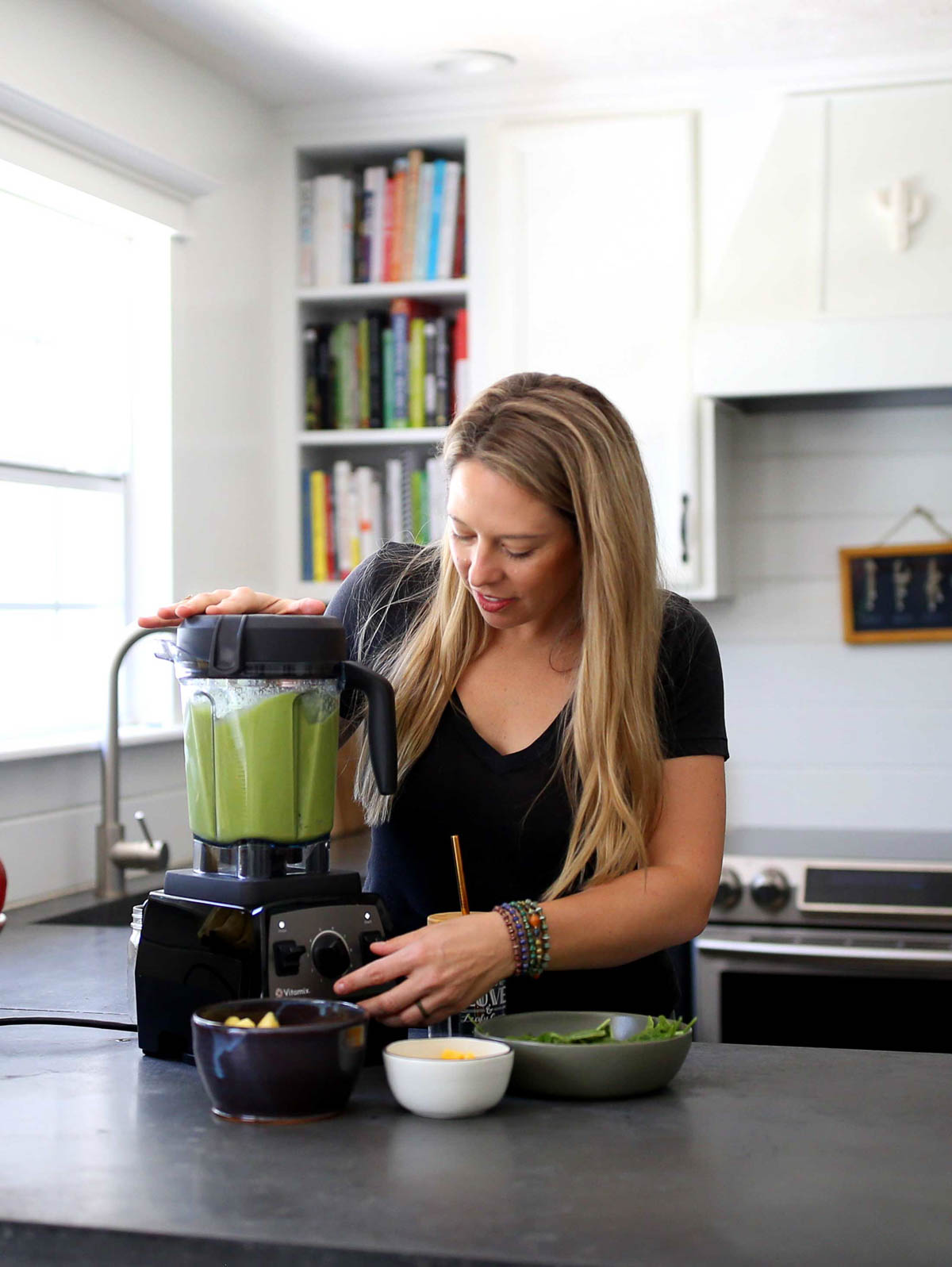
I often get the question, “How do you keep your blender container so clean?” My cleaning methods work on any kind of blender, from high-powered blenders to portable ones. After this tutorial, you’ll be a pro at how to clean a blender. And the bonus is it’ll feel like you’ve got a self-cleaning blender!
Table of contents
The Self-Cleaning Blender in 3 Easy Steps
If you’ve been wondering how to clean that blender without too much work, then I’ve got the solution for you. Here are three quick steps that I do at least once a week to keep my awesome blender looking new.
- Add soap and warm water: Fill your blender about 1/2 way with warm water and a few drops of dish soap.
- Blend: Put the lid on the blender (don’t forget to do this!), then place it onto the base. Turn the machine on and let ‘er rip for a few seconds while you watch the magic happen.
- Rinse well: Rinse the soapy, foamy water after you’re done blending. Then watch your pitcher sparkle (and avoid that extra “clean” taste next time you blend).
Follow these steps immediately after blending and pouring out your green smoothie so that the smoothie remnants don’t stick to the sides of the container. I like to rinse out the container before adding soap and warm water, kind of like rinsing off your dishes before sticking them into the dishwasher.
This method works on any kind of blender, not just my trusty Vitamix. I try to use unscented dish soap in my blender (as well as in my coffee maker) so that there is no aftertaste. It’s totally your preference, yet it does make a difference!
Deep Cleaning Instructions
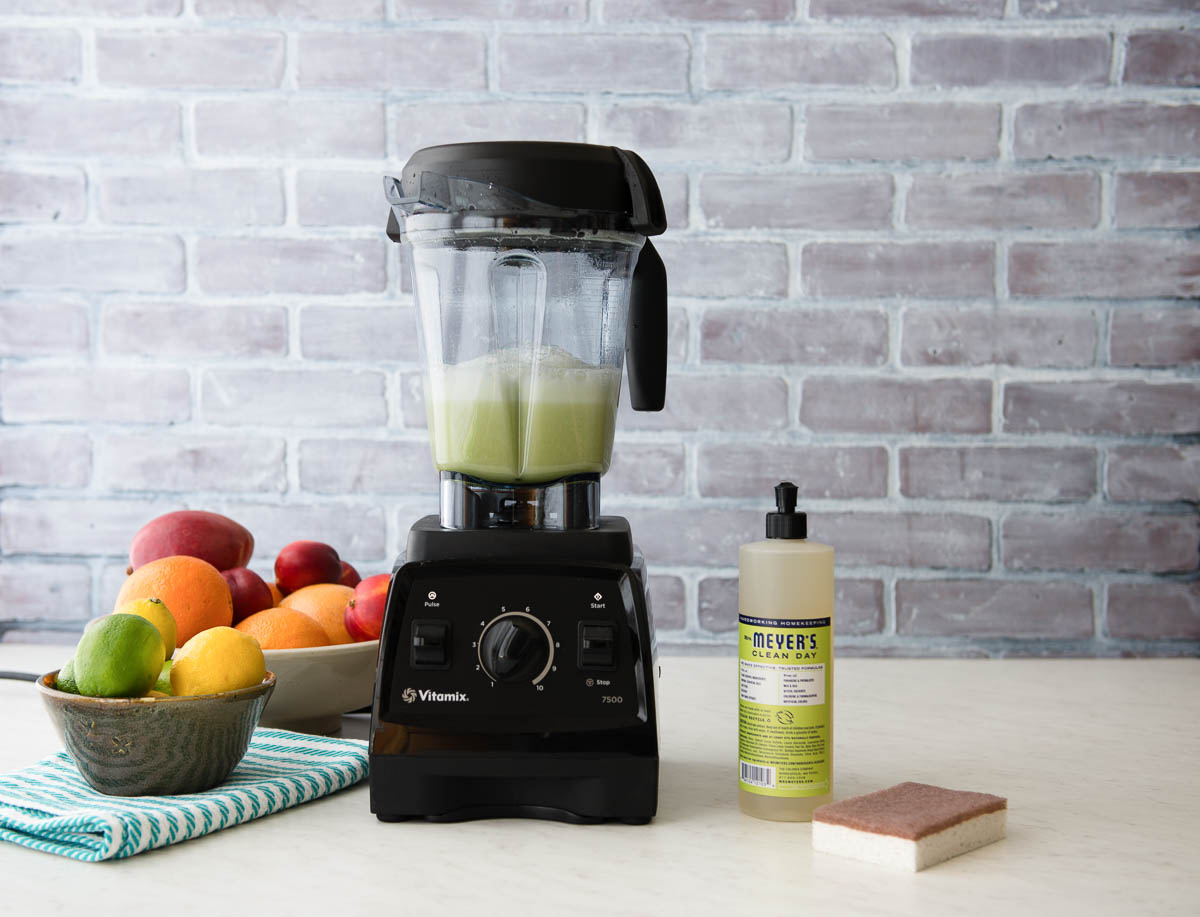
Does your blender need some extra elbow grease to make shine again? If you notice a foggy film appearing on the inside of your blender pitcher (this can happen in plastic and glass blenders), then use these ingredients to clean your blender jar right up.
Baking Soda
Baking soda is a great and natural ingredient used in many household cleaners. It is a great, as well as safe, cleaner for blenders with stubborn stains, too!
Mix baking soda with enough water to turn it into a paste. Use a sponge to apply that paste to the cloudy spots in my blender container. Let it set for 30 minutes, then wet the sponge and lightly scrub on the spots with the paste. This should create enough friction to help you rub off the film.
Rinse the container well and look at your shiny ‘new’ blender!
Vinegar
Adding vinegar in with your soap and water mixture can help combat cloudy spots as well. Some people use straight vinegar to clean, yet I find that it leaves an aftersmell.
Since I don’t like vinegar flavor in my smoothies, I usually add 1/4 cup of vinegar to warm water, then clean using the three-step process above.
This especially helps when those pesky chia seeds stick to the blades or sides of the container. If you try soapy water first and it doesn’t quite get all the extra bits then switch to this vinegar method to ensure a truly clean container.
Scrub Brush
Have you ever tried to get sticky peanut butter off your blender blades after that chocolate peanut butter smoothie? Any kind of food residue on the bottom of the blades will encourage bacteria growth, so it’s important to safely clean them as well.
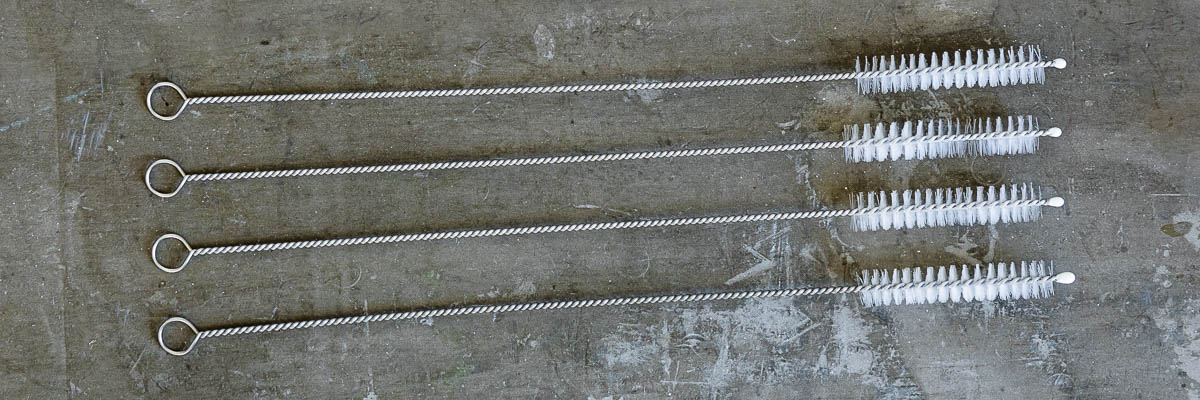
I take a long straw brush and bend it about an inch from the end. Then I add a few drops of dish soap or some baking soda paste, even warm soapy water might work, to scrub the bottom of the blades.
This helps get any extra bits off without having to stick my hands close to the blades in the bottom of the blender jug.
How to Clean the Outside of the Blender
Now that the inside of your blender is shiny and new, it’s time to make the outside match! Ingredients can get stuck, dripped, or spilled on the base of the blender, and need to be cleaned too.
I typically use a soft cloth and warm water to wipe down the outside of my Vitamix. If something greasy gets stuck, add a little vinegar to the cloth as well, then apply a bit of elbow grease.
The same goes for the blender base. Since you can’t stick this in a sink of hot water, hand-wash the exterior with a light wipe.
Pro Tips + Tricks
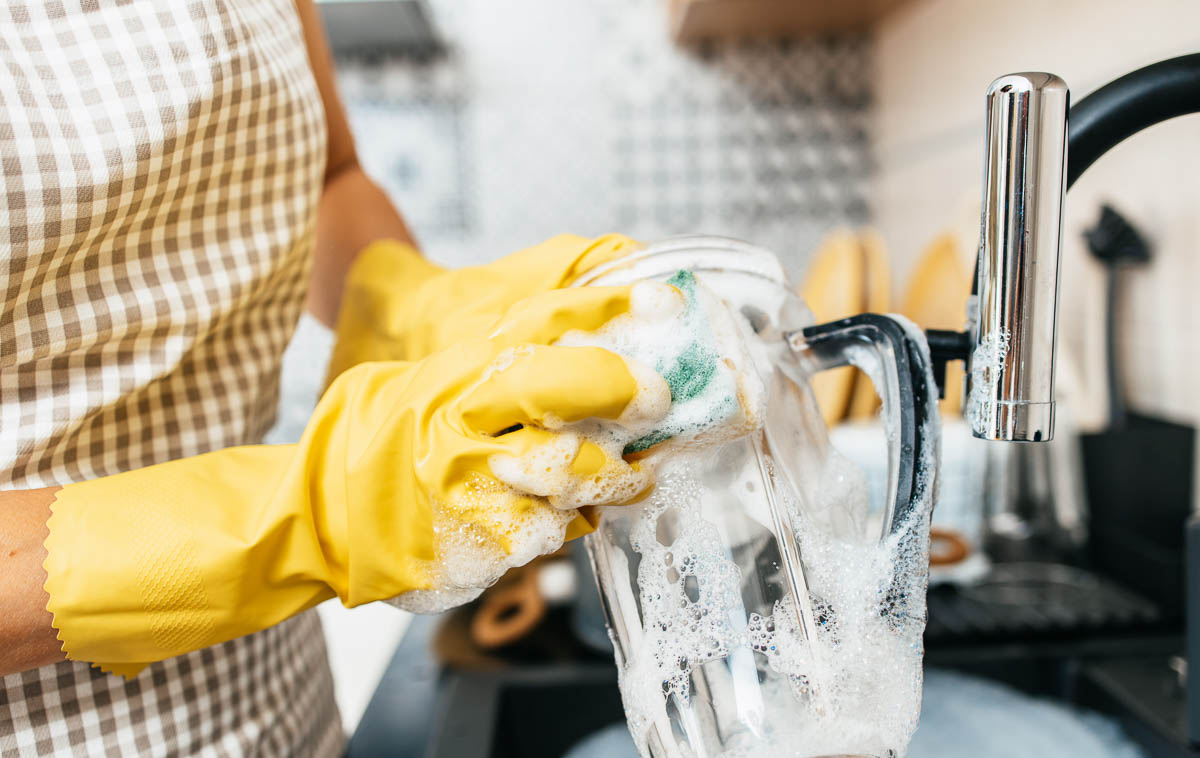
I do not want to taste my dish soap in my next smoothie. I actually switched to a scent-free soap to eliminate any hint of an aftertaste.
Consistency and promptness are the keys to the cleanest machine. I know it’s hard to wash your dishes right away at times, but hear me out. There is no blender container that doesn’t have nooks and crannies that are difficult to reach. If you let that container sit for hours, or days, after use then it will be incredibly more difficult to clean out food remnants.
Instead, try to use this three-step method daily, then deep clean once a week or every two weeks to ensure your appliance is given its best chance at a long and happy life in your kitchen.
How to Clean A Blender FAQs
I use either unscented dish soap, baking soda paste or vinegar to clean my blender. Since it is a machine that makes food, stay away from harsh chemicals or cleaners. Be patient if you have a film or something sticky, go the route of soaking and waiting vs. trying something more harsh and possibly harmful. And clean consistently! I notice that when I clean my blender right after use, it stays shiny and fresh a lot longer.
Blender lids often have weird crevices that make them hard to clean. Don’t be afraid to soak that lid in warm, soapy water for 30 minutes to help lift up tough spots. Also, if your lid has a rubber gasket around it, make sure you remove and clean that often as well. That is the perfect place for mold to get trapped.
I don’t recommend submerging a blender container in a sink full of water since all the blenders I’ve owned have metal pieces on the bottom of the container that might rust. Instead, use my three-step method for a self-cleaning blender, then try safe products like baking soda and vinegar for deep cleaning.
How do you clean your blender? Drop a comment and let me know your favorite blender cleaning tips + tricks.
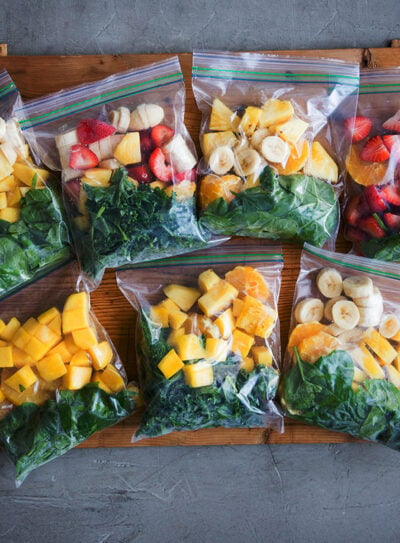
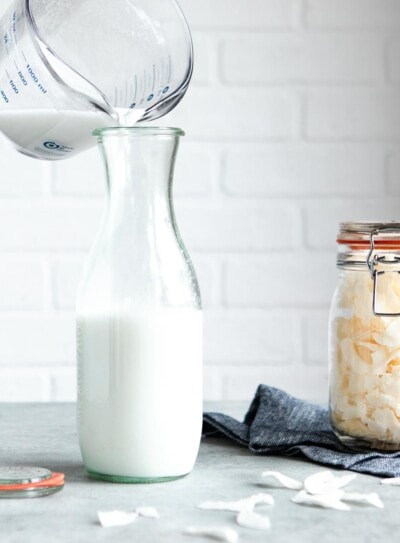
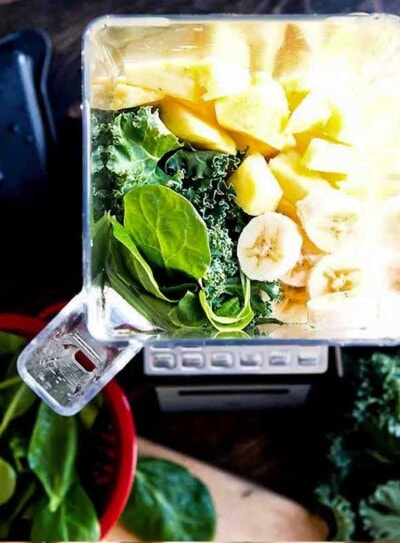
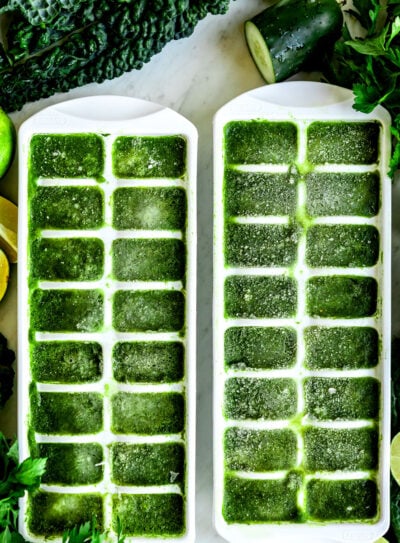
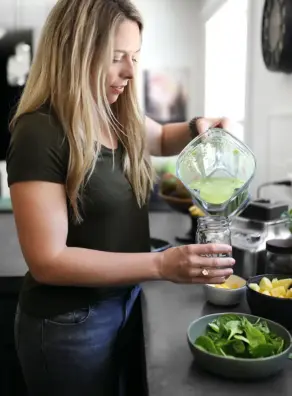
I tried baking soda, vinegar, the denture tabs. Vitamix remains cloudy
I hate to hear that, Rosey!
I actually just pulled this up yesterday to remember how much soap to use so I didn’t end up with a soapy kitchen. This is great! My blender container is sparkling right now, and I don’t have cut up fingers from trying to scrub the blades.
Hi Erin! It’s amazing how much easier these tips make life, right?!